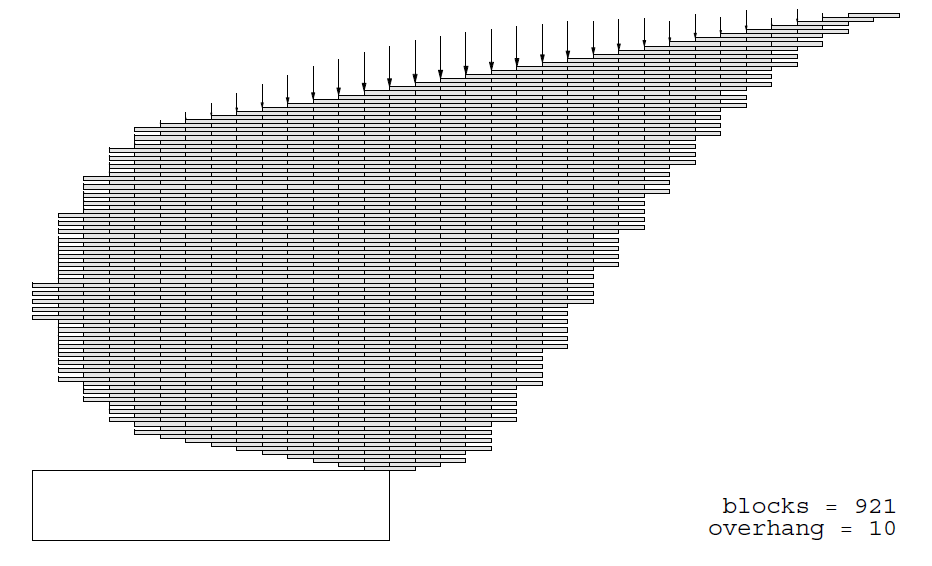Harmonic Overhangs
Yesterday some of my students asked if they could use my whiteboards to set up a harmonic overhang. I said yes, not really knowing what I signed up for and next time I looked over from my game of a chess variation called Dark Chess (which I will make a video of in due time) they had made the following:
These photos are both taken when it was one board away from completion. Unfortunately the last board collapsed the whole structure.
The process for placing the boards is most easily imagined by starting with fewer boards. With one board the maximum overhang is produced by putting a board with half of itself over the edge of the table. Going up to two boards we can position the top block with its halfway point over the end of the one below it, while the second board's 3/4 point hangs at the edge of the table, with only 1/4 hanging over the abyss. Extending this we can keep building to arbitrary length:
Image from WolframMathWorld
Each time we are adding 1/2 then 1/4 then 1/6 then 1/8.... then 1/(2n). The limit of this sum is do with the harmonic function and it gets a bit complicated, but it is of the order log(n).
While I'm here, a common question of this form is how far you can extend a pack of cards. Surprisingly you can get an overhang of 2.259... cards using this method:
However, for all number of boards greater than 2, we can actually beat the harmonic overhang if we allow more than one board on each level. The answers become increasingly non-trivial and new results are constantly being published. Here are a couple of the early optimum solutions with their harmonic partners for comparison:
While the small values have been worked out optimally, many of the larger shapes have not been shown to be the best. One family that has performed very well are the symmetrical stacks. Here is one with 111 blocks which has an overhang of 3:
By allowing weighted stacks (ones where you push downwards on some of the points to help them out) you can go further. Here is one of the most recent models for a 10 block overhang which was released by Paterson and Zwick in 2006 (I remember reading about it in New Scientist not long after when I was at sixth form):
Often referred to as the Oil Lamp
The problem will probably never be solved explicitly for all n, but we have got some lower bounds. Instead of an overhang of the order of log(n) we have increased it up to an order of n^(1/3) with 0.57n^(1/3) looking to be the best so far. We have also shown that kn^1/3 is an upper bound.













